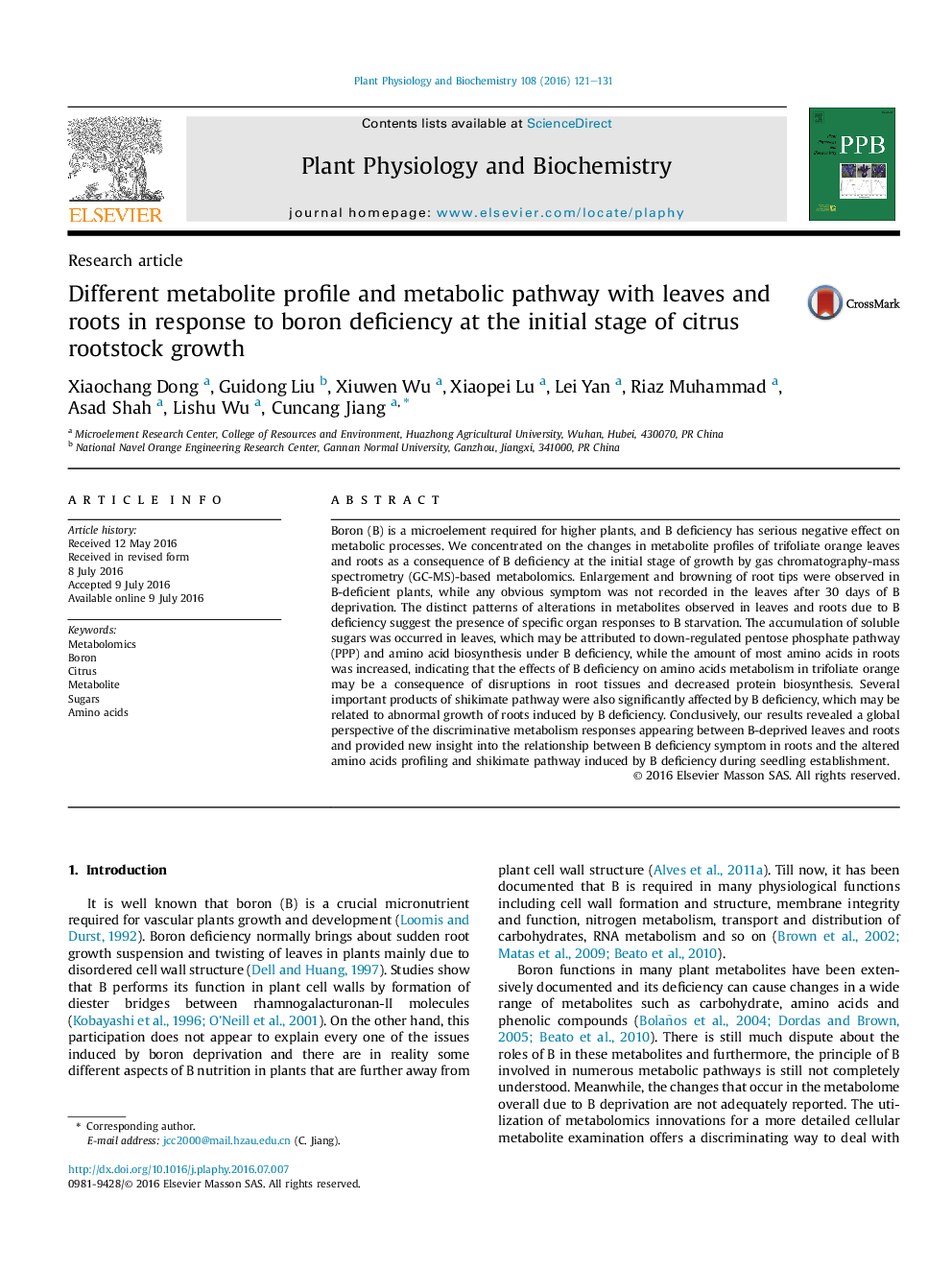| کد مقاله | کد نشریه | سال انتشار | مقاله انگلیسی | نسخه تمام متن |
|---|---|---|---|---|
| 2014699 | 1541913 | 2016 | 11 صفحه PDF | دانلود رایگان |
• Metabolic response to B deficiency differs depending on different plant parts.
• More sugars accumulation is due to lower pentose phosphate pathway and amino acid biosynthesis in B-deprivation leaves.
• Enhanced amino acids levels and shikimate pathway is related to root tissue damage under B deficiency.
Boron (B) is a microelement required for higher plants, and B deficiency has serious negative effect on metabolic processes. We concentrated on the changes in metabolite profiles of trifoliate orange leaves and roots as a consequence of B deficiency at the initial stage of growth by gas chromatography-mass spectrometry (GC-MS)-based metabolomics. Enlargement and browning of root tips were observed in B-deficient plants, while any obvious symptom was not recorded in the leaves after 30 days of B deprivation. The distinct patterns of alterations in metabolites observed in leaves and roots due to B deficiency suggest the presence of specific organ responses to B starvation. The accumulation of soluble sugars was occurred in leaves, which may be attributed to down-regulated pentose phosphate pathway (PPP) and amino acid biosynthesis under B deficiency, while the amount of most amino acids in roots was increased, indicating that the effects of B deficiency on amino acids metabolism in trifoliate orange may be a consequence of disruptions in root tissues and decreased protein biosynthesis. Several important products of shikimate pathway were also significantly affected by B deficiency, which may be related to abnormal growth of roots induced by B deficiency. Conclusively, our results revealed a global perspective of the discriminative metabolism responses appearing between B-deprived leaves and roots and provided new insight into the relationship between B deficiency symptom in roots and the altered amino acids profiling and shikimate pathway induced by B deficiency during seedling establishment.
Journal: Plant Physiology and Biochemistry - Volume 108, November 2016, Pages 121–131
